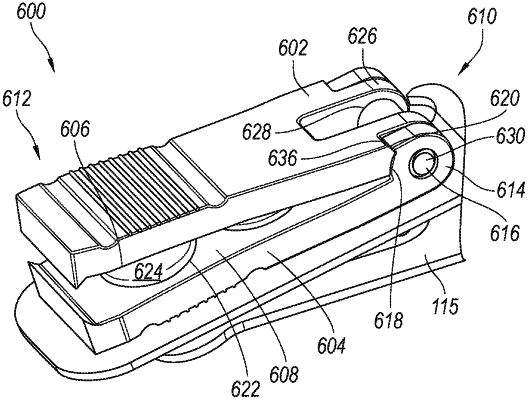| CPC B25B 7/22 (2013.01) [A45F 5/02 (2013.01); B26B 17/006 (2013.01); A45F 2200/0575 (2013.01)] | 20 Claims |

|
1. A nipper assembly for cutting fishing line, the nipper assembly comprising:
a nipper including:
a first elongate member having a proximal end and a distal end, a pair of engagement lobes having aligned bores, the pair of engagement lobes located at the proximal end and spaced apart from each other, the first elongate member comprising a first cutting edge located at a terminus of the distal end, a first elongate member space formed in the proximal end between the pair of engagement lobes, where each of the pair of engagement lobes has a movement surface, the first elongate member comprising a first surface having at least one cavity containing a first magnet;
a second elongate member having a proximal end and a distal end, a pair of first tangs having aligned bores where the aligned bores of the engagement lobes align with the aligned bores of the first tangs, the pair of first tangs located at the proximal end and spaced apart from each other, the second elongate member having a second cutting edge located at a terminus of the distal end, each of the pair of first tangs are located inset from the pair of engagement lobes, a second elongate member space formed in the proximal end between the pair of first tangs, where each of the pair of first tangs has a sliding surface operatively shaped such that the movement surface slides along the sliding surface and terminates at a stop; and
a pin extending through the aligned bore such that the first elongate member and the second elongate member pivot about the pin, wherein the first elongate member space aligns with the second elongate member space to define a receiving space and the pin closes a distal end of the receiving space.
|